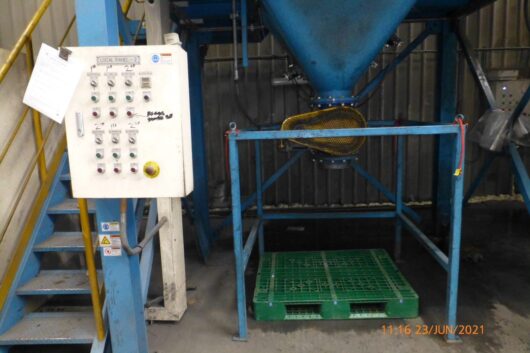Traditionally, recovering plastics and the other materials left after a vehicle has been shredded, which are together known as post-shredder residue, has been seen as the main barrier to the UK increasing its ELV recovery rate to the 95% goal set under the EU ELV Directive for 2015.
At yesterday's event, Sandrine Raphanaud, from PSA Peugeot Citroen's corporate communications team, explained that the company was looking to develop the IT system it uses, MACSI, to make it even clearer to both PSA itself and the vehicle shredders dealing with its ELVs “exactly” what materials were contained in its cars.
“All our cars are identified with a file where the supplier will need to fill out all the materials used for a part,” she said, citing heavy metals as a material it was important to flag up in this way.
The company also marks all the parts in its vehicles with the nature of the materials they contain, and, since 2008 all its vehicles have been recyclable up to 85% of their content, and recoverable up to 95%.
Recyclable
Ms Raphanaud stressed that it was important for all the “actors” involved in the vehicle supply chain to work together and said: “We do all we can to improve the characteristics of the car to make it recyclable.”
But, she acknowledged that, while the company could provide technical support to those dealing with ELVs, exactly what infrastructure was available for dealing with ELVs – and in particular the harder to recover parts – was down to the local situation, with no direct financial support coming from PSA Peugeot Citroen.
Summing up the situation, she said: ” All our cars are 85% recyclable and that's because we have 70% metals, but if we wanted to make our cars 100% recyclable we'd need to ensure they was a supply chain to deal with all the rest. All the metal is easy; all the rest is difficult to recycle.”
There have been steps taken in the UK to tackle the recovery of the non-metal content in ELVs, with metal recycling giant European Metal Recycling proposing at least two facilities specifically aimed at using recycling and gasification technology to deal with the materials (see letsrecycle.com story).
Eco-design
In terms of the eco-design used in its vehicles, PSA Peugeot Citroen used the event to flag up the launch, in 2011, of the first models it has developed under a commitment made in 2007 to include 20% of “green materials” in the plastics, or polymers, it uses in its vehicles.
The company defines green materials as including recycled content, natural fibres – such as hemp or cotton – and biomaterials, which are derived from vegetables and other crops such as maize and are used as an alternative to the petroleum-based petrochemical process.
In total it is looking to increase the 'green material' content further, to 30% of the polymers by 2015, and Ms Raphanaud said: “It's our vision that, in 2015, with all the different parts, between 70% and 75% of 'green materials' will be recycled materials.”
The recovered materials used in the process range from shredder residue, via foam scraps which are offcuts from the mattress manufacturing process through to plastic bottles.
Ms Raphanaud explained that the company would “play” with the three 'green material' streams to find the best compromise. “We think that for each part there is a best solution,” she said.
“Sometimes that will be recycled materials, sometimes natural fibres because there's less weight and sometimes biopolymers. We can't use recycled foam to make a seat, and there isn't any way to produce foam with natural fibres.”
Commenting on the situation, the company's vehicle materials expert, Louis David, said: “We want to use recycled materials but we have respect our vehicle specifications.”











Subscribe for free